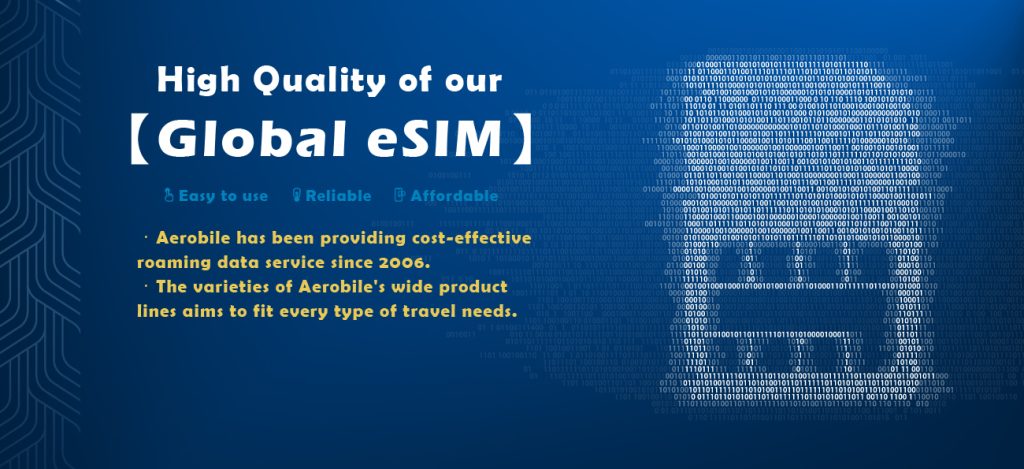
Picture yourself just arriving in a new country, eager to explore, but the moment you step off the plane, you realize that you have no internet. No maps to guide you, no rideshare apps to get around, and no way to check into your hotel. The airport WiFi is painfully slow, and the thought of waiting in line for a local SIM, dealing with paperwork, or paying sky-high roaming fees is frustrating. What if staying connected was as easy as scanning a QR code? No SIM swapping, no searching for WiFi and just instant internet access wherever you go. That’s exactly what an eSIM offers. Unlike traditional SIM cards, an eSIM is embedded in your phone, allowing you to activate a mobile plan digitally in minutes. Whether you’re a frequent traveler, a digital nomad, or just taking a short vacation, an eSIM is the easiest and most hassle-free way to stay connected while traveling. In this guide, we’ll dive into the eSIM vs SIM card comparison, helping you understand how eSIMs work, their benefits, and why they’re the future of travel connectivity. Say goodbye to the stress of finding mobile data abroad. With an eSIM, you can stay connected anywhere, anytime!
Why Connectivity Matters for Modern Travelers

In 2025, staying connected while traveling isn’t just convenient, it’s essential. Whether you’re exploring a new city or working remotely, having reliable internet access makes all the difference. Need to navigate unfamiliar streets? Apps like Google Maps and public transport guides ensure you never feel lost. Last-minute hotel bookings or cashless payments? A stable connection makes it seamless. Want to stay in touch with loved ones or share your adventures on social media? Instant messaging and video calls keep you connected no matter where you are. And for remote workers or digital nomads, a strong internet connection is the key to uninterrupted productivity. With multiple options available like eSIMs, traditional SIM cards, and WiFi hotspots, choosing the right one depends on cost, convenience, coverage, and reliability. So, which is the best for your next trip? Let’s break it down so you can travel smarter and stay connected hassle-free
The Future of Travel Connectivity
An eSIM (embedded SIM) is a digital SIM built into your phone, eliminating the need for a physical SIM card. Instead of swapping out tiny plastic chips, you simply activate a new mobile plan digitally—often by scanning a QR code.
Why Travelers Love eSIMs
– Instant Activation – Buy and activate your plan before you even land at your destination. No more SIM card hunting at the airport.
– No Physical SIM Required – No risk of losing or damaging a tiny SIM card.
– Switch Networks Easily – Connect to the best network in each country without needing a new SIM.
– Dual SIM Capabilities – Use your eSIM for data while keeping your home number active for calls.
– Eco-Friendly – No plastic waste from disposable SIM cards.
Who Should Use an eSIM?
– Frequent travelers who visit multiple countries.
– Digital nomads who need reliable, hassle-free connectivity.
– Business travelers who need instant activation upon arrival.
The Old-School Travel Method
A SIM card (Subscriber Identity Module) is a tiny plastic card that stores your mobile network information. If you’re traveling, you have two main options: buy a local SIM or use an international SIM. It is country-specific and usually the cheapest option for data and calls, perfect for long stays or budget-conscious travelers. On the other hand, an international SIM works in multiple countries, making it ideal for those hopping between destinations without the hassle of switching SIMs.
Why Some Travelers Still Use SIM Cards
– Cheap for Long Stays – If you’re in one country for weeks or months, a local SIM can be cost-effective.
– Widely Available – You can buy SIM cards at airports, convenience stores, and kiosks.
The Downsides of SIM Cards
– Physical Swapping Required – Removing and replacing your SIM can be a hassle.
– Registration Hassles – Some countries require ID verification to buy a SIM.
– Not Ideal for Multi-Country Travel – You may need a new SIM for each destination.
Who Should Use a SIM Card?
– Budget travelers staying in one country for an extended period.
– Travelers with older phones that don’t support eSIM technology.
Free, But Is It Reliable?
There are various WiFi options that keep you online wherever you go! One of the most accessible choices is public WiFi, which you’ll find in cafes, airports, hotels, and shopping malls. While it’s convenient and free, keep in mind that public networks aren’t always secure and may have slow speeds, especially in busy areas. If you need a more reliable and private connection, portable WiFi (Pocket WiFi) is a great option. This small, portable device allows you to connect multiple gadgets at once, making it perfect for groups or those working on the go. You can rent or buy one depending on your trip duration.
Pros of Using WiFi
– Sometimes Free – Cafes, libraries, and hotels often offer free internet.
– No SIM or eSIM Needed – Just connect and go.
The Downsides of Relying on WiFi
– Security Risks – Public WiFi is prone to hacking and data theft.
– Unreliable Connections – Slow speeds, login restrictions, and limited availability.
– Limited Mobility – You need to stay near a hotspot to stay connected.
Who Should Use WiFi?
– Casual travelers who only need internet occasionally.
– Short-term visitors staying in hotels with reliable WiFi.
eSIM vs SIM vs WiFi: A Head-to-Head Comparison

Which Option is Best for You?
Not sure which option is best for staying connected while traveling? Here’s a simple breakdown to help you decide! If you love hassle-free, instant connectivity across multiple countries, then an eSIM is the way to go—no need to swap physical cards, just activate it digitally and stay connected wherever you go. On the other hand, if you’re staying in one country for an extended period and want a budget-friendly option, a local SIM card is your best bet, offering affordable data plans with strong coverage. But if you’re a light internet user and don’t mind searching for hotspots, relying on WiFi can work well—just keep in mind that it’s not always reliable, and you might need to hop between cafes, hotels, or public spaces to get online. Each option has its perks, so choose the one that fits your travel style and needs best!
AEROBILE E-SIM
YOUR PARTNER IN EVERY TRIP!
Do you want to enjoy your trip? Share your experiences with your family and friends on social media without having problems with expensive roaming charges? WE GOT YOU!
Plan ahead! Order AEROBILE eSIM now and enjoy the following benefits it brings your way!
- Enjoy easy eSIM access that keep you connected without the hassle of traditional SIM cards.
- Provide budget-friendly plans
- Top-notch customer support
- The roaming service is all set up once you arrive on your destination!
Planning your trip can be stressful, but losing your internet connection is a total travel nightmare!
But with Aerobile eSIM by your side, just have fun and seize the moment with seamless connectivity wherever your travels take you.

